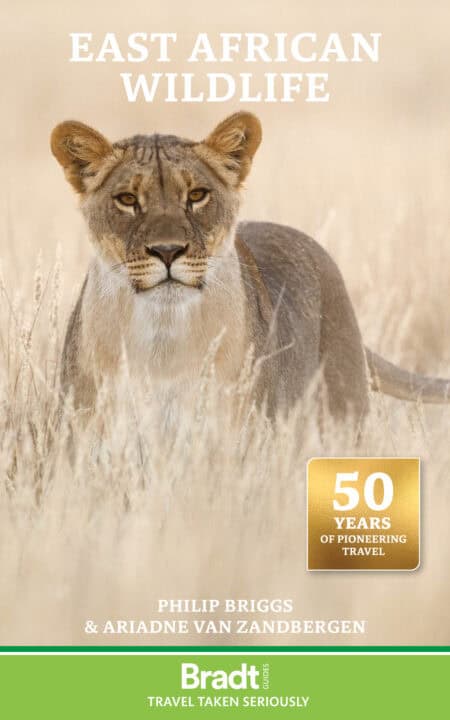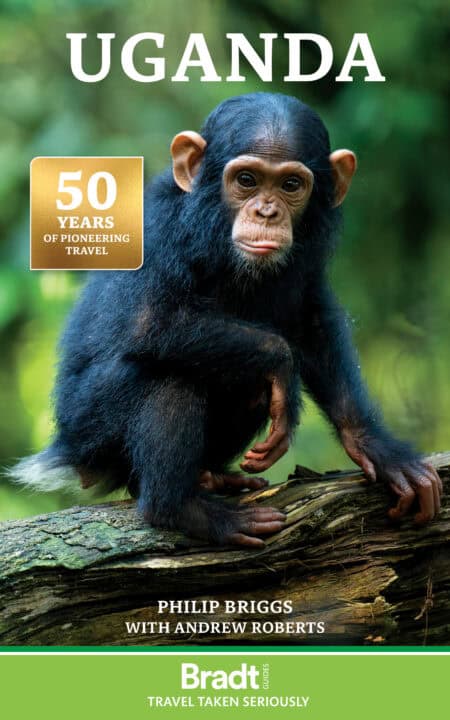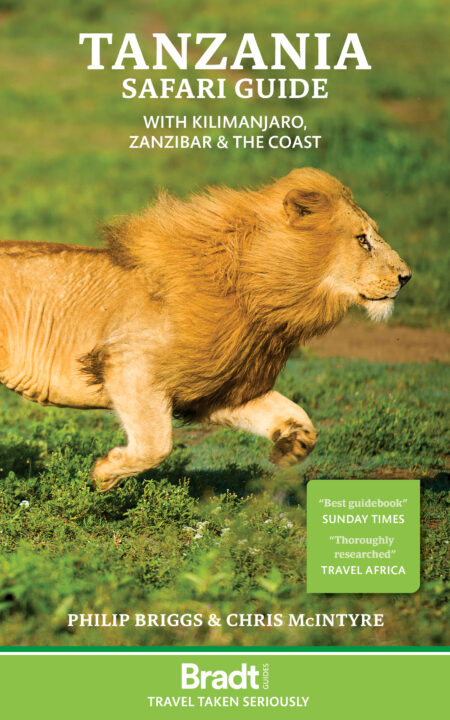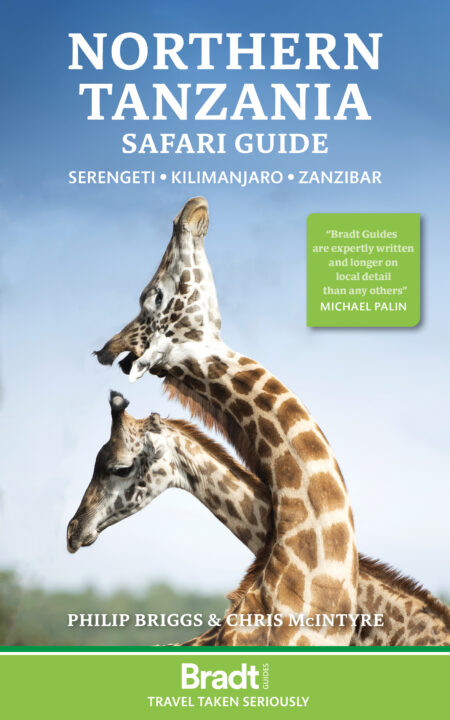Do you want to go gorilla tracking in Uganda but you’re unsure where to start? Our guide to combining this experience with an unforgettable trip to Kenya and Tanzania is here to help.
East Africa is unique in the hearts of adventurers and wildlife enthusiasts worldwide. Stretching across Tanzania, Kenya, Rwanda, and Uganda, East Africa reveals some of the planet’s most breathtaking natural wonders and wildlife experiences.
Tanzania and Kenya are celebrated for their sweeping savannahs, vast plains teeming with large herds of wildebeests, zebras, and the elusive “Big Five” – lions, elephants, leopards, rhinos, and buffalo. The symphony of life and survival plays out in the open, drawing travellers to witness unforgettable scenes like the Great Migration, a phenomenal spectacle of millions of animals traversing the Serengeti and Maasai Mara ecosystems.
In contrast, Uganda’s dense jungles offer a more intimate connection with wildlife. Here, in the misty depths of Bwindi National Forest, small groups of travellers venture into the undergrowth, tracking elusive mountain gorillas. This humbling experience provides a rare glimpse at one of humanity’s closest relatives.
Combining the grandeur of a classic African safari with the mystery of jungle trekking offers travellers an unmatched adventure that covers the essence of the region’s diverse ecosystems and wildlife.
This comprehensive guide will help you navigate the planning, logistics, and highlights of blending these experiences into a single journey, ensuring you experience the best East Africa has to offer.
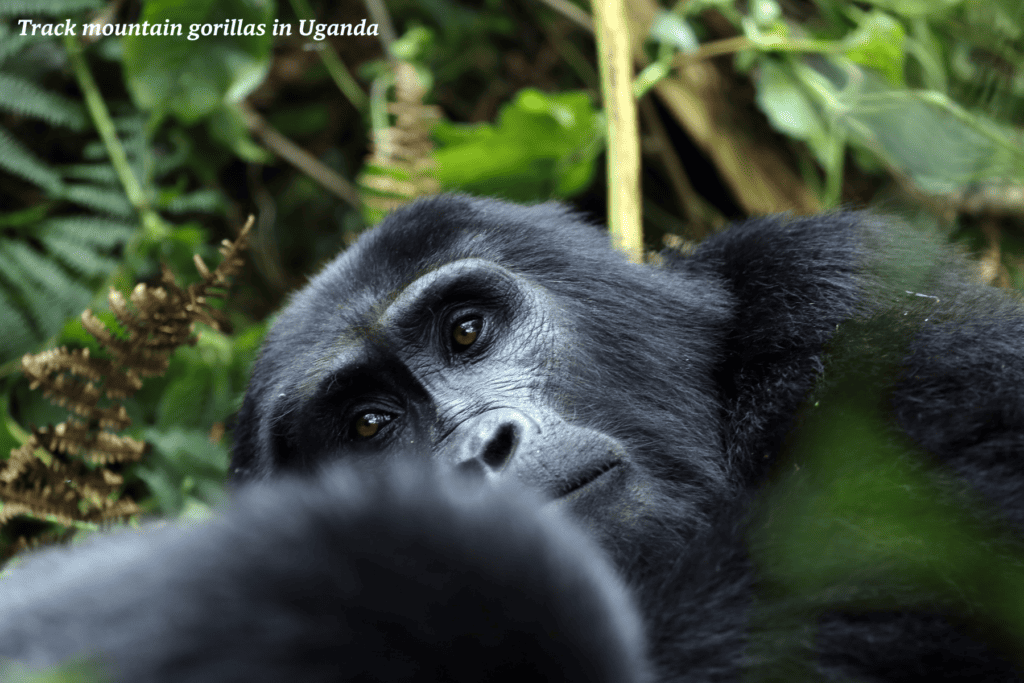
Gorilla trekking in Uganda: why should you combine it with a Kenya and Tanzania safari?
Combining a safari in Tanzania and Kenya with a Uganda gorilla safari promises a unique blend of adventure, discovery, and wildlife immersion that few other travel experiences can match.
Each East African country offers distinctive environments and wildlife encounters, creating an unparalleled opportunity to experience the full spectrum of the region’s natural wonders.
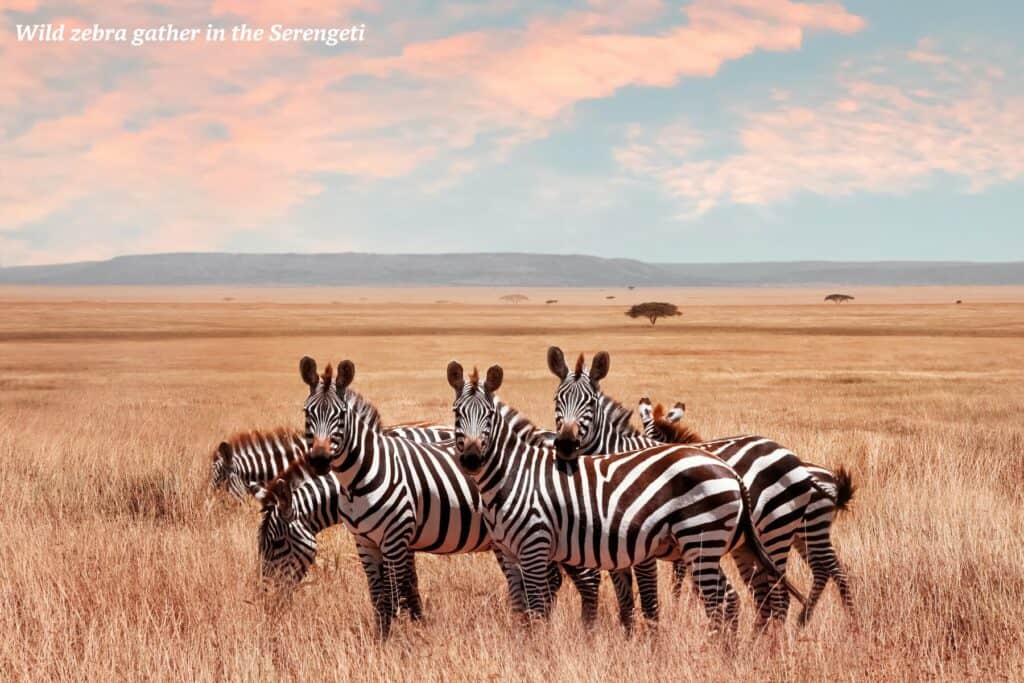
Witness a wide range of relief settings and wildlife
Tanzania and Kenya are home to sprawling savannahs dotted with wildlife and known for landmarks like Mount Kilimanjaro, the Serengeti, and the Maasai Mara. These wide-open plains provide a perfect backdrop to witness some of Africa’s most celebrated animals, from herds of elephants in Amboseli to prides of lions lounging in the Serengeti.
Uganda, on the other hand, offers an entirely different ecosystem.
Its dense rainforests, particularly Bwindi Impenetrable Forest, serve as sanctuaries for critically endangered mountain gorillas, allowing travellers to experience wildlife up close in a setting brimming with greenery.
For more inspiration, see our guide to Uganda’s natural splendour.
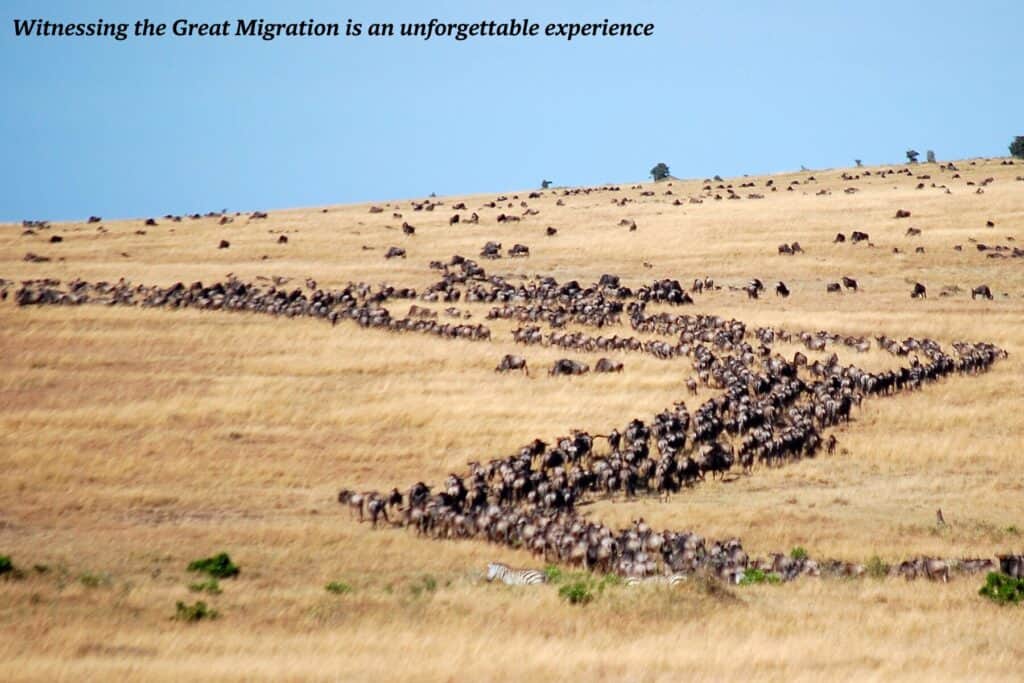
See the Great Migration and go gorilla trekking in a single trip
Few experiences are as mesmerising as watching the Great Migration unfold in Tanzania and Kenya, where millions of wildebeests, zebras, and gazelles undertake a perilous journey searching for greener pastures. The thrill of witnessing dramatic river crossings or predators stalking prey on these endless plains is an experience travellers carry with them for a lifetime.
Adding gorilla trekking in Uganda to your itinerary allows travellers the best of both worlds: the grand spectacle of African plains and the intimate, quiet drama of the jungle.
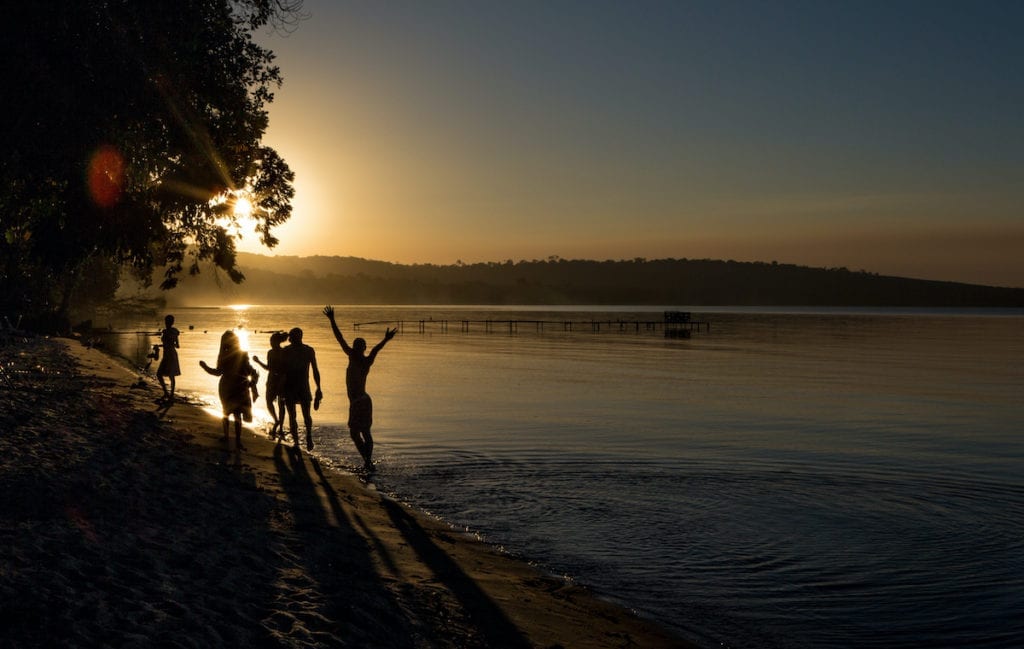
Experience a deep connection to conservation and local communities
East Africa’s wildlife experiences involve viewing animals, connecting with local conservation efforts, and understanding the cultural significance of these environments. Tanzania, Kenya, and Uganda have active programs that protect wildlife and support local communities, allowing travellers to engage with local guides, trackers, and conservationists.
Visitors leave with a deeper appreciation for these regions’ critical role in preserving some of the world’s most precious wildlife.
When is the best time to go?
Choosing the right time to embark on a combined East African adventure is vital to maximising your experience in Tanzania, Kenya, and Uganda.
Each country has unique climatic patterns influencing wildlife behaviour, making certain months ideal for safari game viewing and gorilla trekking.
Here’s a breakdown of the best seasons and conditions to plan around for a successful, memorable trip.
Tanzania and Kenya safari season
For a safari in Tanzania and Kenya, the dry season, from June to October, is widely considered the best time to visit. This period offers ideal conditions for game viewing because water sources are limited, drawing wildlife to specific areas and making animals easier to spot in the sparse vegetation. Here’s a closer look at the highlights by month:
- June to October: This is peak safari season in Tanzania and Kenya, offering clear skies, comfortable temperatures, and excellent game visibility. It’s also the time of the famous river crossings in the Great Migration, as wildebeests and zebras face the treacherous Mara River, making their way between the Serengeti and Maasai Mara.
- November to March: While November marks the beginning of the short rainy season, this period still offers good game viewing opportunities with fewer tourists and a lush, green landscape. It’s also the calving season, particularly in the southern Serengeti, providing opportunities to witness newborn animals and predator interactions.
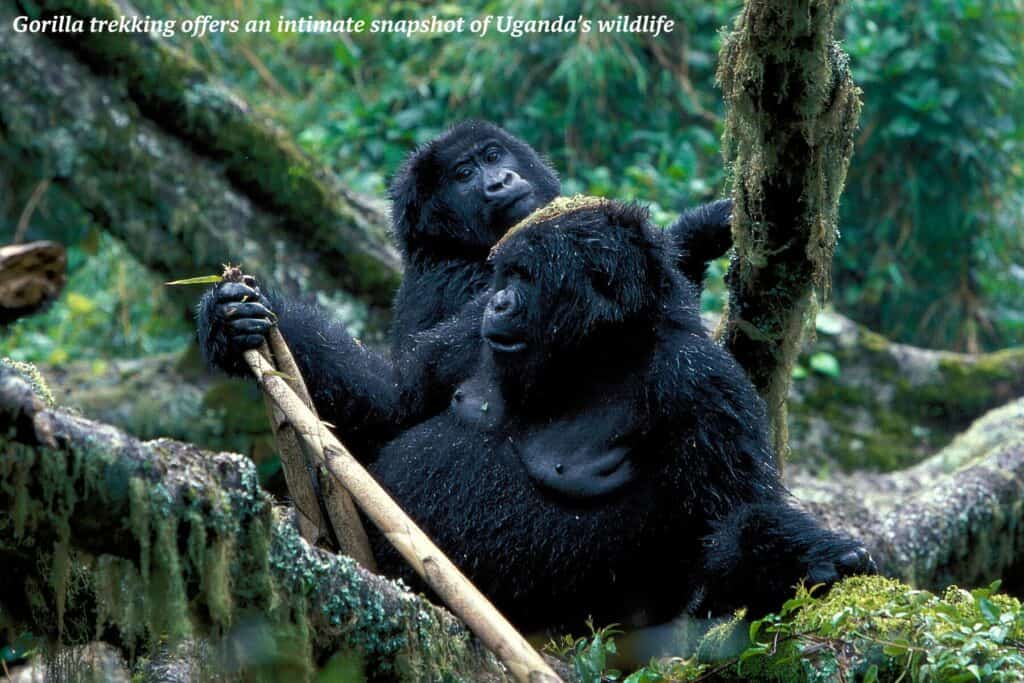
Uganda’s gorilla trekking season
Uganda’s gorilla trekking season aligns well with Tanzania and Kenya’s safari season. Bwindi Impenetrable Forest, where most gorilla trekking occurs, has a more temperate rainforest climate. Although it can rain year-round, there are periods with lower rainfall, making trekking conditions more favorable:
- June to September: Like in Tanzania and Kenya, this dry season is the most popular and ideal for gorilla trekking. Trails are less muddy, and the dense forest is easier to navigate. Additionally, gorillas tend to stay at lower elevations during these months, shortening the trekking time for visitors.
- December to February: This short dry season also offers excellent trekking conditions. Relatively lower rainfall makes navigating the trails and tracking gorillas easier, and the reduced crowd size in these months can also make for a quieter, more private trekking experience.
Tanzania’s safari highlights
Serengeti National Park
The Serengeti is one of the world’s most famous safari destinations. Millions of wildebeests, zebras, and gazelles traverse the Serengeti ecosystem each year in search of fresh grazing lands. This journey is punctuated by impressive river crossings, where herds brave crocodile-infested waters and predator interactions with lions, cheetahs, and hyenas on the open plains.
For more information, check out our definitive guide to Tanzania’s best national parks.
- Best time to visit: The migration is a year-round event. However, the most dramatic moments – like the Grumeti River crossing (June) and Mara River crossing (July to September) – occur during the dry season.
- Wildlife highlights: The “Big Five” (lion, elephant, leopard, buffalo, and rhino), cheetahs, hippos, giraffes, and an impressive variety of bird species.
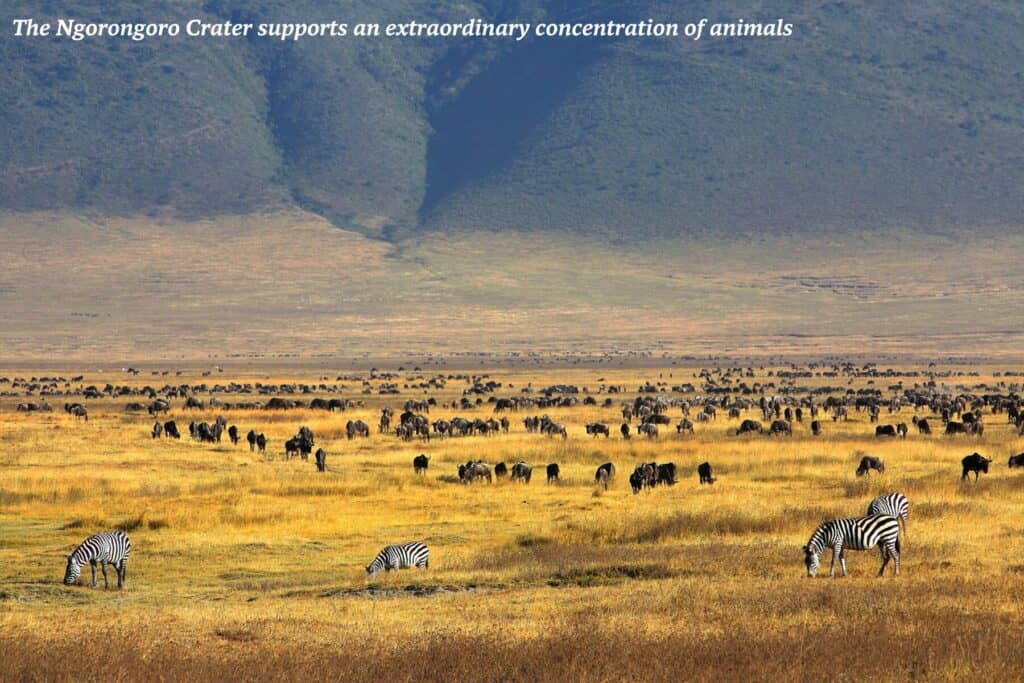
Ngorongoro Crater
The Ngorongoro Crater, a UNESCO World Heritage site, is an ancient volcanic caldera teeming with wildlife. Its unique geography supports an extraordinary concentration of animals, making it one of the best locations for close-up encounters with Africa’s famed species. The Crater floor is home to nearly 25,000 animals, including a dense population of lions, large herds of wildebeests, zebras, and rare black rhinos.
- Best time to visit: Wildlife viewing is excellent year-round, though June to October is the dry season, which attracts animals to water sources.
- Wildlife highlights: Large prides of lions, black rhinos, elephants, and hippos, as well as diverse bird species, including flamingos that gather at Lake Magadi within the Crater.
Tarangire National Park
While less famous than the Serengeti, Tarangire National Park offers a distinct safari experience known for its massive herds of elephants and iconic baobab trees. During the dry season, the Tarangire River becomes a lifeline for wildlife, drawing in large populations of elephants, zebras, and wildebeests, along with predators such as lions and leopards.
- Best time to visit: The dry season (June to October) is ideal for game viewing, as animals gather near the river.
- Wildlife highlights: Elephants are the main attraction, but visitors can also spot lions, leopards, giraffes, and many bird species.
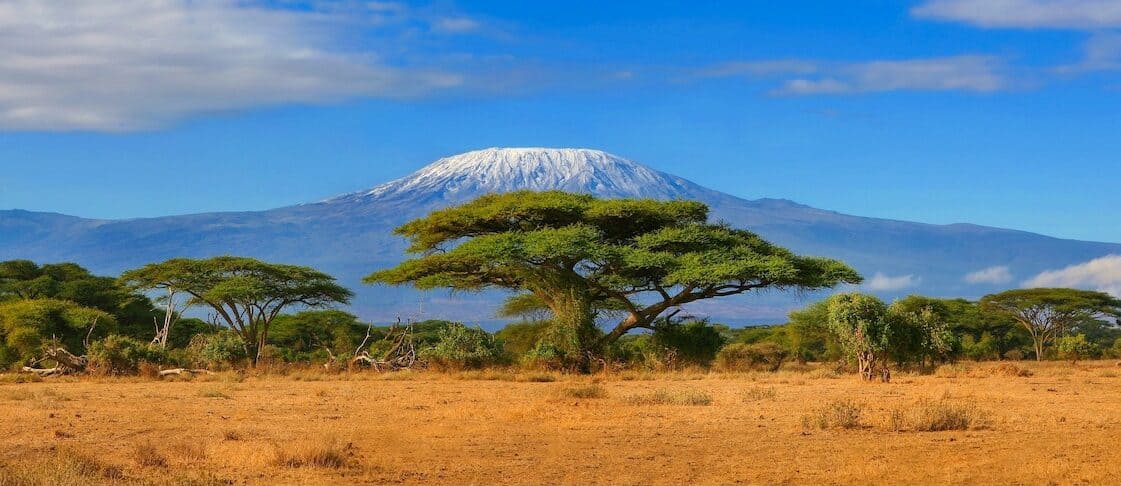
Mount Kilimanjaro National Park
For the adventurous traveller, Mount Kilimanjaro National Park offers more than just spectacular views of Africa’s highest peak. While Kilimanjaro is primarily known for trekking, its surrounding forests are home to unique wildlife, including colobus monkeys and elephants. Climbing Kilimanjaro can be combined with a safari in Tanzania, creating a diverse itinerary combining land-based adventure and wildlife experiences.
- Best time to visit: January to March and June to October are ideal for climbing and viewing mountains in clear weather.
- Wildlife highlights: Colobus and blue monkeys, elephants, and various bird species.
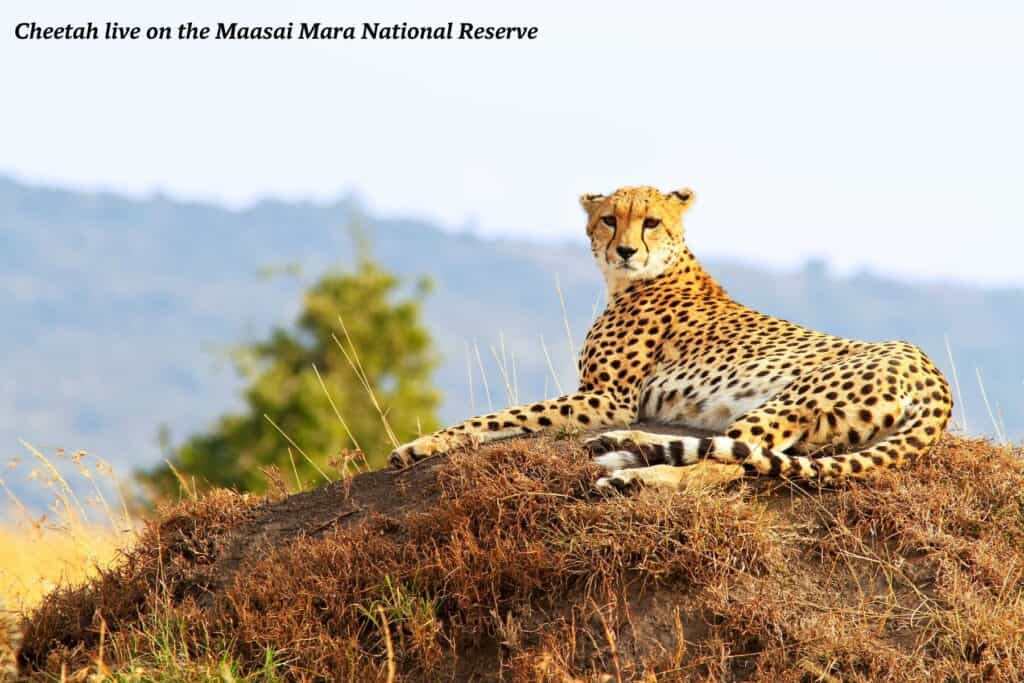
Kenya’s safari highlights
Maasai Mara National Reserve
The Maasai Mara is one of Africa’s most celebrated wildlife reserves and is renowned for its role in the annual Great Migration. The reserve’s plains are also home to high densities of big cats, making it one of the best places to spot lions, cheetahs, and leopards in their natural habitat.
- Best time to visit: July to October, during the peak of the Great Migration, when animals cross the Mara River, attracting predators and thrilling scenes.
- Wildlife highlights: The “Big Five”, cheetahs, hyenas, giraffes, and numerous bird species. The reserve’s lions are famous for their large prides and frequent interactions.
Amboseli National Park
Amboseli National Park, located at the base of Mount Kilimanjaro, is best known for its large elephant herds and stunning views of Africa’s tallest peak. With Kilimanjaro as a scenic backdrop, Amboseli offers unforgettable photographic opportunities. The park’s marshy areas attract a wide range of wildlife, creating an oasis of activity against a landscape of dry, dusty plains.
- The best time to visit: June to October, when elephants and other animals gather around the park’s permanent water sources.
- Wildlife highlights: Large herds of elephants, hippos, giraffes, and buffalo, as well as a variety of water birds. Amboseli’s elephants are famously habituated to humans, allowing for close, awe-inspiring encounters.
Lake Nakuru National Park
Lake Nakuru National Park, part of the Great Rift Valley, is famous for its striking pink-hued lake, caused by flocks of flamingos that gather to feed on the lake’s algae. The park is also one of the best places in Kenya to see rhinos, with black and white rhino populations protected within its borders.
- Best time to visit: The flamingo populations are highest in the dry season (June to September), although this depends on water levels and food availability.
- Wildlife highlights: Flamingos, rhinos, lions, and Rothschild giraffes. The park’s baboons and colobus monkeys add to the diversity of wildlife sightings.
Tsavo National Parks
Tsavo East and Tsavo West National Parks form Kenya’s largest protected area, offering a vast, untamed wilderness. Tsavo is known for its dramatic scenery, including volcanic formations and red-tinged elephants that wallow in the park’s iron-rich soil. While it’s less crowded than other parks, Tsavo offers a more rugged safari experience for those seeking solitude and vast landscapes.
- Best time to visit: From June to October, when animals gather around water sources and clear skies provide the best views.
- Wildlife highlights: Large elephant herds, lions (including the famed “maneless” lions of Tsavo), hippos, and crocodiles in the Galana River.
Gorilla trekking in Uganda
Gorilla trekking in Uganda is a once-in-a-lifetime experience, offering an intimate and awe-inspiring encounter with one of the world’s most endangered species: the mountain gorilla.
Unlike a typical safari, where wildlife can be observed from the comfort of a vehicle, gorilla trekking is a more immersive and challenging adventure, requiring visitors to venture deep into the dense jungles of Bwindi Impenetrable Forest. Here’s everything you need to know to make the most of this remarkable experience.
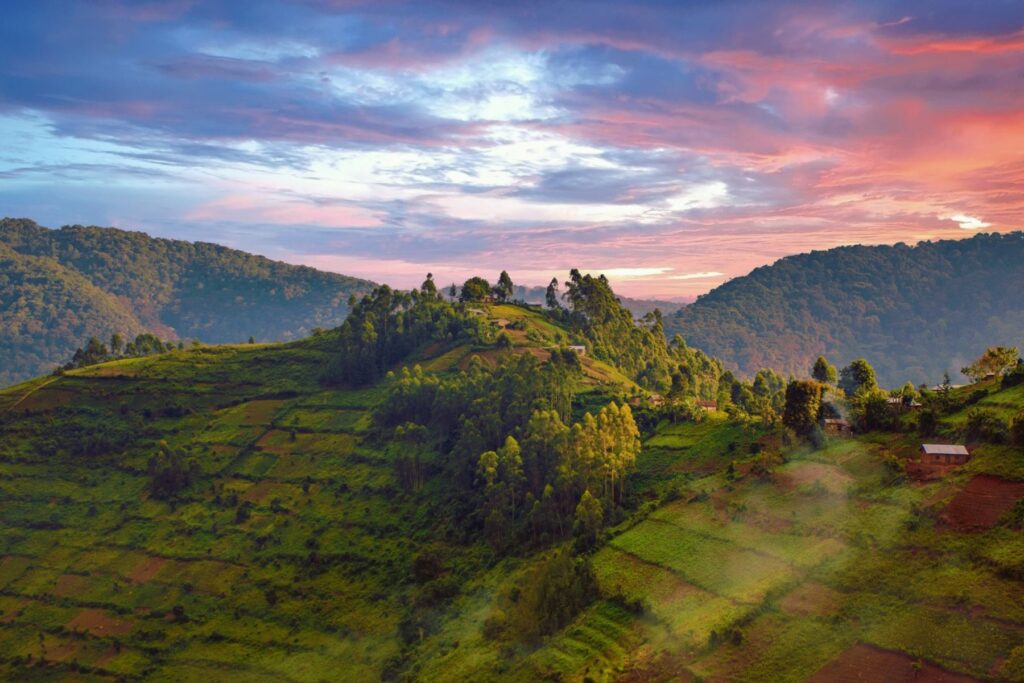
Bwindi Impenetrable Forest
Located in southwestern Uganda, Bwindi Impenetrable Forest is a UNESCO World Heritage site known for its rich biodiversity and dense, mist-covered landscape. The forest is home to roughly half of the world’s remaining mountain gorillas, with around 20 gorilla families habituated for tourism.
The forest’s rugged terrain and thick vegetation make it an ideal habitat for gorillas, but it also means that trekking here can be physically demanding.
What to expect during the trek
Gorilla trekking is led by experienced guides and trackers, who play an essential role in locating gorilla families each day. Trackers set out early to trace the gorillas’ movements from the previous day, radioing guides once they’ve found the family. Groups of up to eight visitors, accompanied by guides, embark on a gorilla tour ranging from a short walk to several hours of hiking, depending on the gorillas’ location that day.
Still unsure about what to expect? Don’t miss our comprehensive guide to gorilla tracking.
- Duration: Treks can last one to six hours, so a reasonable fitness level is required. The trekking paths are often steep, muddy, and challenging, especially after rainfall.
- Observation time: Once the gorilla family is found, visitors spend a strictly regulated one hour observing them at close quarters. This minimises stress on the gorillas while giving guests a meaningful encounter with these majestic creatures.
- What you’ll experience: Watching a gorilla family interact is a profoundly moving experience. You may see young gorillas playing, mothers nurturing their infants, or the group’s dominant silverback watching protectively over his family. Observing their behaviours up close offers a rare window into gorillas’ social dynamics and gentle nature.
Itinerary suggestions for a combined safari and gorilla trekking adventure
Creating an itinerary that combines a Tanzania and Kenya safari with gorilla trekking in Uganda involves strategic planning to maximise your time and experiences across three countries. Below are a few sample itineraries to help inspire your ideal East African adventure.
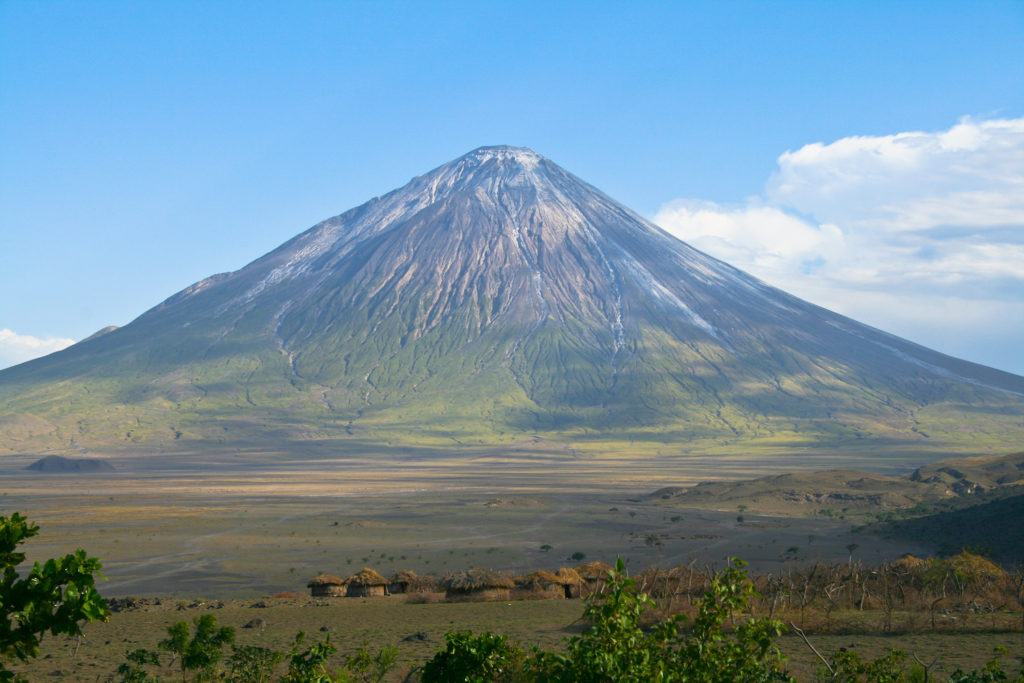
10-day classic East Africa highlights itinerary
Day 1-3: Serengeti National Park, Tanzania
- Activities: Begin your journey in Tanzania’s Serengeti, immersing yourself in game drives across the endless plains. Witness the Great Migration (season-dependent) and encounter the “Big Five.”
- Highlights: Wildebeest herds, lion prides, and overnight stays in luxury lodges or tented camps.
Day 4-5: Ngorongoro Crater, Tanzania
- Activities: Head to the Ngorongoro Conservation Area and descend into the Crater for one of Africa’s best game-viewing experiences. Take a day to explore the Crater floor and observe diverse species.
- Highlights: High-density wildlife sightings, including elephants, rhinos, and an incredible variety of birdlife.
Day 6-7: Maasai Mara, Kenya
- Activities: Cross into Kenya and spend two days exploring the Maasai Mara. Enjoy game drives, visit Maasai villages, and experience Kenya’s iconic landscapes.
- Highlights: Big cat sightings, river crossings (during migration), and cultural interactions with the Maasai community.
Day 8-10: Bwindi Impenetrable Forest, Uganda
- Activities: Fly from Nairobi to Entebbe, then transfer to Bwindi for gorilla trekking. Spend a day trekking to encounter a gorilla family in the wild.
- Highlights: Face-to-face gorilla encounters, lush rainforest landscapes, and guided forest walks.
This itinerary offers a balanced mix of Tanzania’s sweeping savannahs, Kenya’s diverse wildlife, and Uganda’s unique jungle experience, all within a 10-day timeframe.
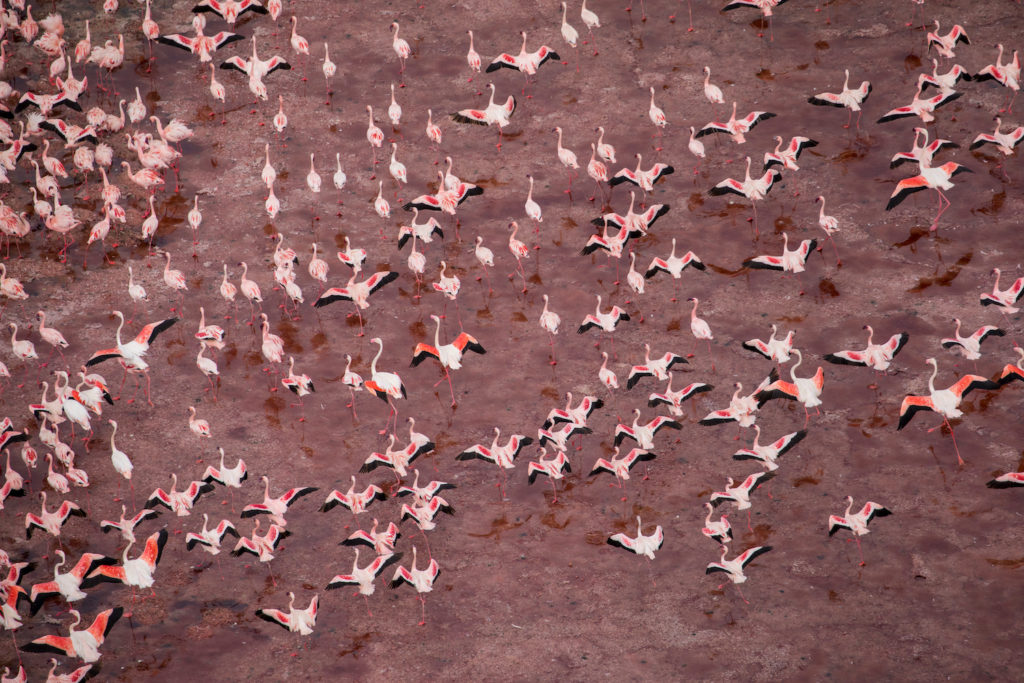
Detailed 14-day East African safari and trekking itinerary
Day 1-4: Northern Tanzania safari circuit
- Activities: Begin with four days exploring Tanzania’s top parks, including Serengeti, Ngorongoro, and Tarangire. Immerse yourself in game drives and enjoy the varying landscapes.
- Highlights: The Great Migration (season-dependent), Ngorongoro Crater, and Tarangire’s elephant herds.
Day 5-7: Maasai Mara, Kenya
- Activities: Fly to Maasai Mara and spend three days on safari. Engage in morning and evening game drives, witness predator-prey interactions, and explore the Mara River.
- Highlights: Iconic safari scenes, large lion prides, and dramatic river crossings during migration season.
Day 8: Nairobi, Kenya
- Activities: Take a break in Nairobi to explore urban attractions – like the Giraffe Centre or the David Sheldrick Wildlife Trust – and relax.
- Highlights: Nairobi’s conservation centres, vibrant markets, and local cuisine.
Day 9-12: Bwindi Impenetrable Forest, Uganda
- Activities: Travel to Bwindi and spend several days in Uganda’s rainforest. Participate in gorilla trekking and optional bird-watching or nature hikes.
- Highlights: Gorilla trekking, unique bird species, and a slower pace to appreciate the forest.
Day 13-14: Lake Bunyonyi, Uganda
- Activities: Wind down with a stay at Lake Bunyonyi, Uganda’s beautiful lake dotted with islands. Enjoy activities like boat trips, swimming, or relaxation by the water.
- Highlights: Scenic lake views, peaceful setting, and cultural interactions with the local communities.
This itinerary is ideal for travellers who want an in-depth East African experience that includes safari, culture, and relaxation time.
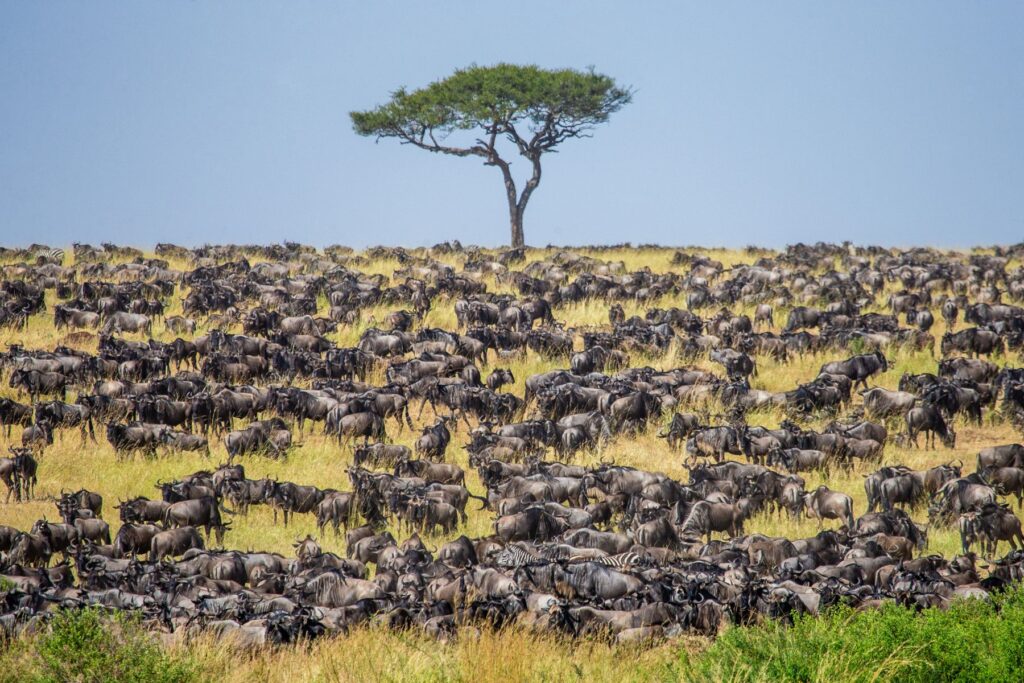
7-Day fast-paced adventure safari and trekking combo
Day 1-3: Maasai Mara, Kenya
- Activities: Begin in Kenya with an intensive three-day safari in the Maasai Mara, focusing on game drives and exploring the reserve’s diverse wildlife.
- Highlights: “Big Five” sightings, significant cat encounters, and the opportunity to witness river crossings during migration.
Day 4-5: Nairobi to Bwindi Impenetrable Forest, Uganda
- Activities: Transfer from Nairobi to Bwindi, Uganda. Use the following day for gorilla trekking and experience the thrill of close encounters with gorillas in the wild.
- Highlights: Mountain gorilla trekking, rainforest immersion, and stunning views.
Day 6-7: Lake Mburo National Park, Uganda
- Activities: Complete your journey with a visit to Lake Mburo National Park, a smaller but beautiful park known for its zebras, antelopes, and peaceful lake setting.
- Highlights: Guided walking safaris, boat trips on Lake Mburo, and a relaxing end to the adventure.
This itinerary is perfect for travellers on a tight schedule who still want a diverse experience. In one week, it captures the highlights of a 10 says Kenya safari and Uganda gorilla trekking.
Tips for planning the perfect itinerary
- Start with the big highlights: Decide which experiences are non-negotiable for you, such as the Great Migration, gorilla trekking, or visiting specific parks.
- Consider travel times and flights: Air travel is often more efficient between these countries; many travel between significant safari areas to maximise their time.
- Work with a tour operator: A reputable tour operator can coordinate logistics, secure permits, and offer valuable insights for a seamless journey.
- Balance high-energy activities with rest days: Safaris and treks can be demanding, so including some downtime or shorter travel days helps ensure a well-paced trip.
More about travel in East Africa
To find out more about travel in East Africa, check out our guides:
